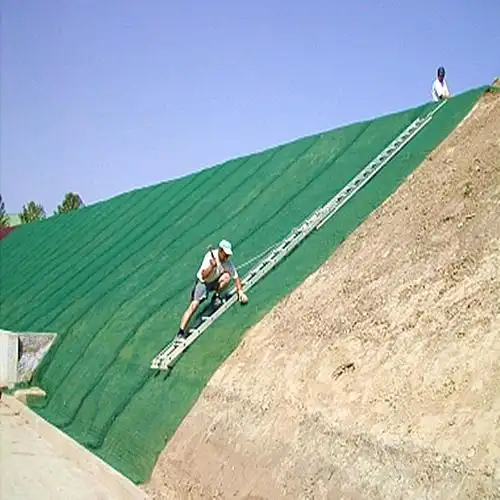Do you know the applications and types of geonets? Let’s take a look together below:
Geonet is mainly used in soft foundation treatment, roadbed reinforcement, slope protection, bridge abutment reinforcement, coastal slope protection, reservoir bottom reinforcement and other projects. Laying geonets on road slopes can prevent rock blocks from slipping and avoid harm to people or vehicles; Wrapping the ballast with geonet can prevent the loss of ballast and deformation of the roadbed, and improve the stability of the roadbed; Laying geonets can reinforce the road surface and prevent the development of reflective cracks; Geonet, as a reinforcing material in the filling of retaining walls, can disperse soil stress, limit lateral displacement, and enhance stability; Using geonets to make stone cages for the protection of embankments and rock surfaces can prevent erosion, landslides, and soil erosion.

Types of geonets:
1、 CE1311
1. Used for roadbed reinforcement, interlocking granular fillers with grids to form a stable plane, preventing the fillers from sinking, and dispersing vertical loads. Multi layer reinforcement can be used in areas with harsh geographical conditions;
2. Laying it in embankments and roadbed fill can increase its stability and reduce its footprint;
3. Used for road reinforcement, blending the grid with road materials to effectively disperse and transmit loads, and prevent road cracks;
4. Can withstand certain impact loads;
5. Can withstand large alternating loads;
6. Shorten the construction period of the project;
7. Construction can also be carried out under harsh environmental conditions;
8. It can prevent road subsidence and cracks caused by frost heave;
9. It can reduce the amount of road materials used;
10. Accelerate the construction speed.

2、 CE1511
1. Protection of embankments and rock surfaces. To prevent erosion, avoid collapse, rock loosening, and soil erosion;
2. River and riverbank management projects can be made into rectangular, square, or tubular stone cages due to their strong flexibility, good permeability, resistance to seawater erosion, and ability to absorb wave impact energy. They can be directly installed underwater for diversion and protection, without the need for expensive underwater operations during construction;
3. The spray anchor protective net around the tunnel wall.
Post time: Dec-02-2024

